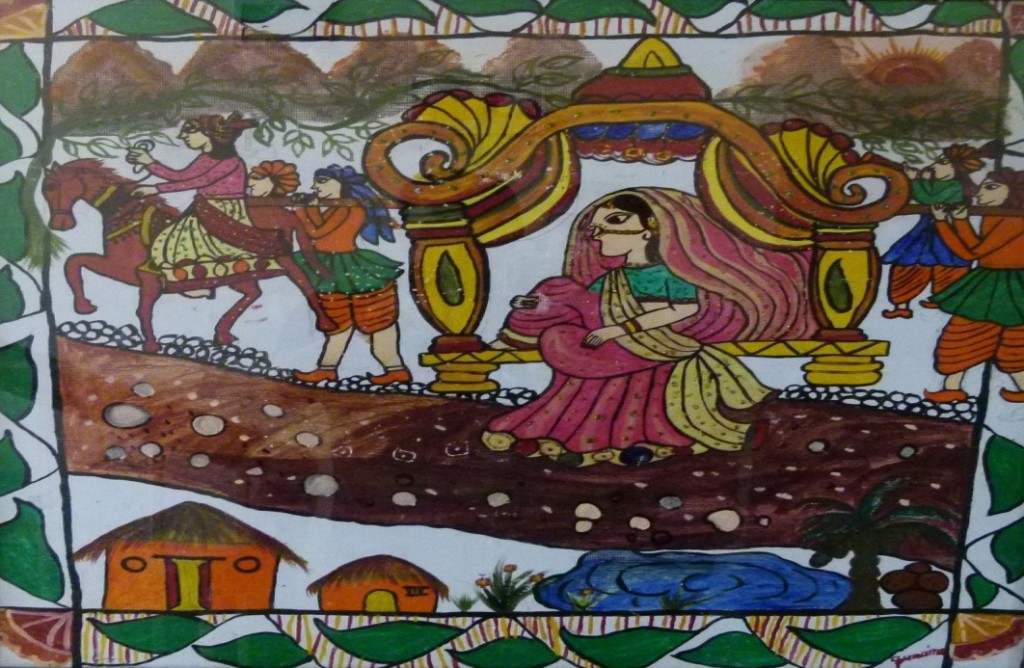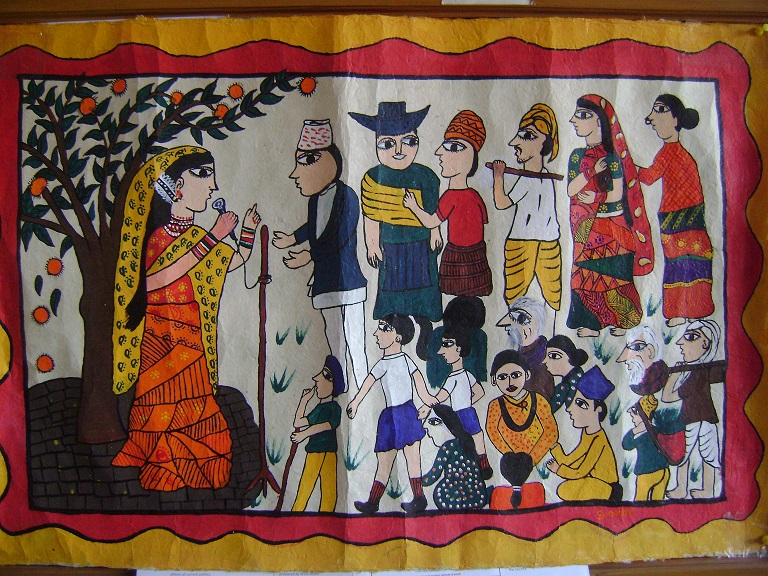 Mithila painting of a woman performing a traditional role
Mithila painting of a woman performing a traditional roleDuring October, whilst in Lahan, an eastern region of Nepal, I was fortunate enough to meet 30 women from the Siraha, Saptari, Dhanusha and Mahhottari districts. I was lucky enough not only to meet them but to facilitate a session on ‘Dialogue’ with them under the banner of The Peacebuilding Initiative conducted by the All People's Development Centre (APEC). For the last two years, APEC and financial assistance partner Search for Common Ground (SFCG), have been working with these women with the aim of enhancing their capacity for economic and social self-reliance.
Under The Peacebuilding Initiative, APEC recently organised training on “Collaborative Leadership and Consensus Building”. I was present at this training, and had the responsibility of ensuring the participants were aware of how conflicts, particularly localised surrounding conflicts, are solved through dialogue.
The women's passion and eagerness to learn was incredible. Two years ago at the start of APEC's work, it was rare for these women to socialise beyond their own homes; they were like birds inside a cage. They hardly spoke other than to family members. However, after two years of involvement with APEC, they made huge steps in development and are now suitably ready to take on the challenges of leadership, peace worker and peace facilitation. They not only overcame their own internal struggles, but progressed to solve external disputes with family members, communities and society in general, including local administrations, police authorities, Village Development Committee (VDC) members.
The substantial changes that some of these women underwent provided the inspiration to express themselves through paintings. They were mainly from the Maithili community, where Mithila art is part of their culture. The art is popular in the Dhanusha and Mahhottari districts of Janakpur and is considered the pride of the community.
The importance of the paintings lies in the message of the Mithila paintings, which reflects the stereotypical role that women are restricted to. For instance, in the lowland area of Terai, women are restricted from working and participating in community and public events, and are not part of decision-making processes.
One Mithila artist, Sunaina, explained her thoughts behind the painting above:
The painting gives a clear message of a female leader delivering a public speech in front of people representing different ages, ethnicity, culture, religion and gender. The painting shows a shift in the role of women from the private domain to the public; it shows they have vision. The painting also represents co-existence, peace and harmony amongst the different ethnic, cultural, and religious people.Sunil Sah, chairperson of APEC, said that he had never seen a Mithila painting of a woman with a microphone delivering a speech in public before. The painting highlights women’s vision for equality, peace and harmony.
Change however, is a slow process. The success women have had so far has generally been overlooked both locally and nationally. It seems that for now at least, the symbolic Mithila paintings are a starting point for women to encourage and find support in the community, and a way of sharing their vision for both the present and future.











